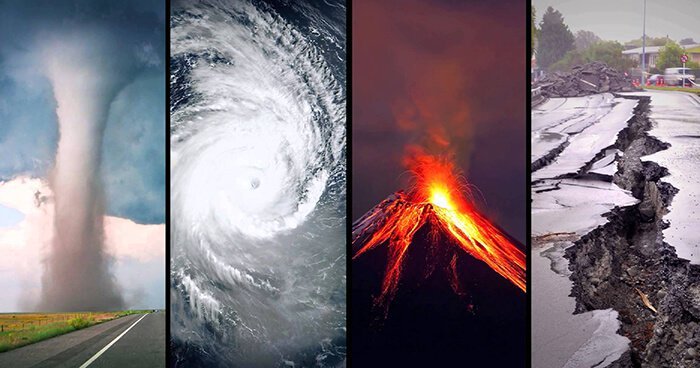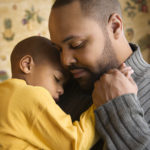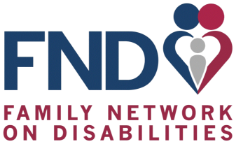INformation Hub
Responding to Disasters
Responding to Disasters
The nation has had many natural disasters of late, all of which have caused catastrophic damage and been traumatic to those impacted.
This web page gives you multiple resources describing how to prepare for an anticipated natural disaster (be it a hurricane, tornado, flood, earthquake, or wildfire). There are also sections on resources to help people respond during the event itself; materials and help for the aftermath focused on support and recovery; and tips for parents, caregivers, and mental health professionals as to how to provide support following a specific kind of disaster. Many materials in Spanish are identified.
- Preparing for a Natural Disaster
- Responding During a Natural Disaster
- Afterwards: Support and Recovery
This web page of resources is one part of the larger Resource Collection on Trauma-Informed Care, a mini-library put together through a collaboration of RPTAC 2 @ ECAC, CPIR, and a review and development team of Parent Center staff.
The resources listed below are well-suited for Parent Centers to use in preparing their own families for a natural disaster, but you’ll find that most are also excellent resources to share with the families and communities you serve and during workshops or trainings you offer on disaster planning or recovery.
_________________
Be Informed
From Ready.gov, available in multiple languages
Great for sharing with families and using yourself! Preparation begins with knowing what disasters and hazards could affect your area, how to get emergency alerts, and where you would go if you and your family need to evacuate. The web page lists many types of natural disasters (e.g., earthquakes, flooding, tornados) as well as other catastrophes (active shooters), all of which are linked to more information on how to prepare for that kind of event. (Also available in Chinese, French, Haitian-Creole, Hindi, Japanese, Korean, Russian, Spanish, Tagalog, Urdu, and Vietnamese.)
Make a Plan
More guidance from Ready.gov, excellent for sharing with families and community members
For this information in many other languages, go to: https://www.ready.gov/languages
We’re told: Make a plan today. Your family may not be together if a disaster strikes, so know how you’ll contact one another and reconnect if separated. To support your making of a plan, this page gives you a checklist of steps to take and supportive links to help you do so. Along the sidebar, there’s a list of options to drill down into information that’s most relevant to you–for example, individuals with disabilities, Native American readiness, shelters, and more.
https://www.ready.gov/make-a-plan
Build a Kit
Information and printable checklist for kids, to help them prepare, and another version for adults. From ready.gov.
https://www.ready.gov/kids/build-a-kit
![]() Important Things To Know Before a Disaster | Video
Important Things To Know Before a Disaster | Video
This 2-minute video is from FEMA. A useful resource to use training families and others to jumpstart their disaster planning.
Create Your Family Emergency Communication Plan | Family Communication Plan Fillable Card
From FEMA, ready for sharing with families and other community members
The link below leads you to two resources: (a) an 8-page guide for families creating their own plans for communicating during an emergency; and (2) a card that families can fill and share among themselves, so that all members have the same basic critical information.
https://www.ready.gov/sites/default/files/2021-04/family-emergency-communication-plan.pdf
Make Your Family’s Plan
From the Red Cross. Great for families.
Visit this resource page of the Red Cross to find planning materials ready to be shared with families and your community. There’s a Family Disaster Plan Template in English and Spanish, links to the Red Cross’ free Emergency App (also in English and Spanish), and additional guidance on topics such as Building a Survival Kit.
https://www.redcross.org/get-help/how-to-prepare-for-emergencies/make-a-plan.html

Responding During a Disaster
Response is putting preparedness plans into action. Hopefully, a family’s plan has been developed through discussion and awareness, using some of the tools listed above, and that plan works.
Still, none of us knows what’s really going to happen when the crisis hits. Nature is wildly unpredictable, so it’s difficult to connect you with resources for the during part of a disaster. We must rely on federal, state, and local agencies—and each other—to help. With that in mind, these early responder resources are good to know about and perhaps list in a preparedness plan.
_________________
SAMHSA’s Disaster App | Access critical, disaster-related behavioral health resources right from your phone
The SAMHSA Disaster App makes it easier to provide quality support to survivors. Users can navigate pre-deployment preparation, on-the-ground assistance, post-deployment resources, and more-at the touch of a button from the home screen. Users also can share resources, like tips for helping survivors cope, and find local behavioral health services. Self-care support for responders is also available.
https://store.samhsa.gov/product/samhsa-disaster
FEMA’s Mobile App
There’s an app you can download to your mobile phone that has multiple helpful features for users, including real-time weather alerts, emergency safety tips, being able to locate emergency shelters in the area, and find disaster recovery centers. The app is available in English and Spanish.
https://www.fema.gov/mobile-app
Looking for a Place to Shelter?
If you’re looking for a place to shelter, here’s a good instruction to note: From FEMA’s website, “You can use the normal text message functionality on your phone to search for open shelters: text SHELTER and a Zip Code to 43362 (4FEMA). You may also contact 211, if it has been activated by your State.”

Afterwards: Support and Recovery
Parent Centers, schools, mental health professionals, and community organizations are all involved with helping those who have gone through a natural disaster. The trauma of such events is often extreme, especially so for children. Below you’ll find many resources you can use:
- in staff development
- to inform your Center more deeply about how to talk to and support children and their families in the aftermath of a disastrous natural event
The resources here are in addition to those identified in the “How Parents and Caregivers Can Support and Help Children” section of the Basic Information about Trauma page of this Resource Collection.
_________________
In General…
Natural Disasters: Brief Facts and Tips
Also available in Spanish: Desastres naturales: Consejos y datos breves
Here’s a brief summary of typical reactions of children following a natural disaster, with quick insights about what might be expected after a hurricane, flood, wildfire, earthquake, and so on. Suggestions for adult caregivers are given. From the National Association of School Psychologists (NASP).
https://www.nasponline.org/resources-and-publications/resources-and-podcasts/school-climate-safety-and-crisis/natural-disaster-resources/natural-disasters-brief-facts-and-tips
Helping Children After a Natural Disaster: Information for Families and Educators
A more expansive version of the resource just listed, this includes tips as to helping children adjust to relocation after the disaster and specific considerations for schools. There’s also a companion infographic for families, available in both English and Spanish.
 Helping Young Children Cope After Exposure to a Traumatic Event
Helping Young Children Cope After Exposure to a Traumatic Event
Great for sharing with families. From Zero to Three.
Tragedies are especially distressing to families with young children. This short resource is designed to help parents navigate a very challenging time. Parent can learn how their children may respond to the stress and how they can support them after a traumatic event.
https://www.zerotothree.org/resources/1094-helping-young-children-cope-after-exposure-to-a-traumatic-event
Tips for Talking With and Helping Children and Youth Cope After a Disaster or Traumatic Event: A Guide for Parents, Caregivers, and Teachers
This tip sheet from SAMHSA will help parents, caregivers, and teachers learn some common reactions, respond in a helpful way, and know when to seek support. Tips include info on possible reactions to a disaster or traumatic event by age group and also tips for talking with children and youth of different age groups.
https://store.samhsa.gov/product/tips-talking-helping-children-youth-cope-after-disaster-or-traumatic-event-guide-parents/sma12-4732
Helping Children After a Natural Disaster: Helping Children Cope
This web article at ready.org speaks directly to parents whose children have experienced the trauma of a natural disaster. Using a Q&A format, the article is organized by the child’s age. Common concerns and questions of parents are answered by how child psychologists would respond based on each developmental stage.
https://www.ready.gov/kids/parents/coping
Resources for Specific Types of Disaster…
Parent Guidelines for Helping Children after a Tornado
(Después de Pasar por La Experiencia de Un Tornado)
Another 3-page article in NCTSN’s series, this one about tornados, organized into the same sections as the previous resource.
https://www.nctsn.org/resources/parent-guidelines-helping-children-after-tornado
Parent Guidelines for Helping Children after an Earthquake
A third article in the series, organized into sections as described above.
https://www.nctsn.org/resources/parent-guidelines-helping-children-after-earthquake

Which part of this Resource Collection would you like to visit now?
Return to the Resource Collection landing page
Resource Collection | Basic Information about Trauma
Resource Collection | What is Trauma-Informed Care?
Resource Collection | Trauma and Specific Populations
Resource Collection | Building Trauma-Informed Schools
Resource Collection | Responding to Disasters (You’re already here)
SOURCE ARTICLE: Center for Parent Information & Resources and Exceptional Children’s Assistance Center
Give us a call at (727) 523-1130 or (800) 825-5736 or request a callback by clicking below.
311 South Missouri Ave, Clearwater, FL 33756
(727) 523-1130
(800) 825-5736

